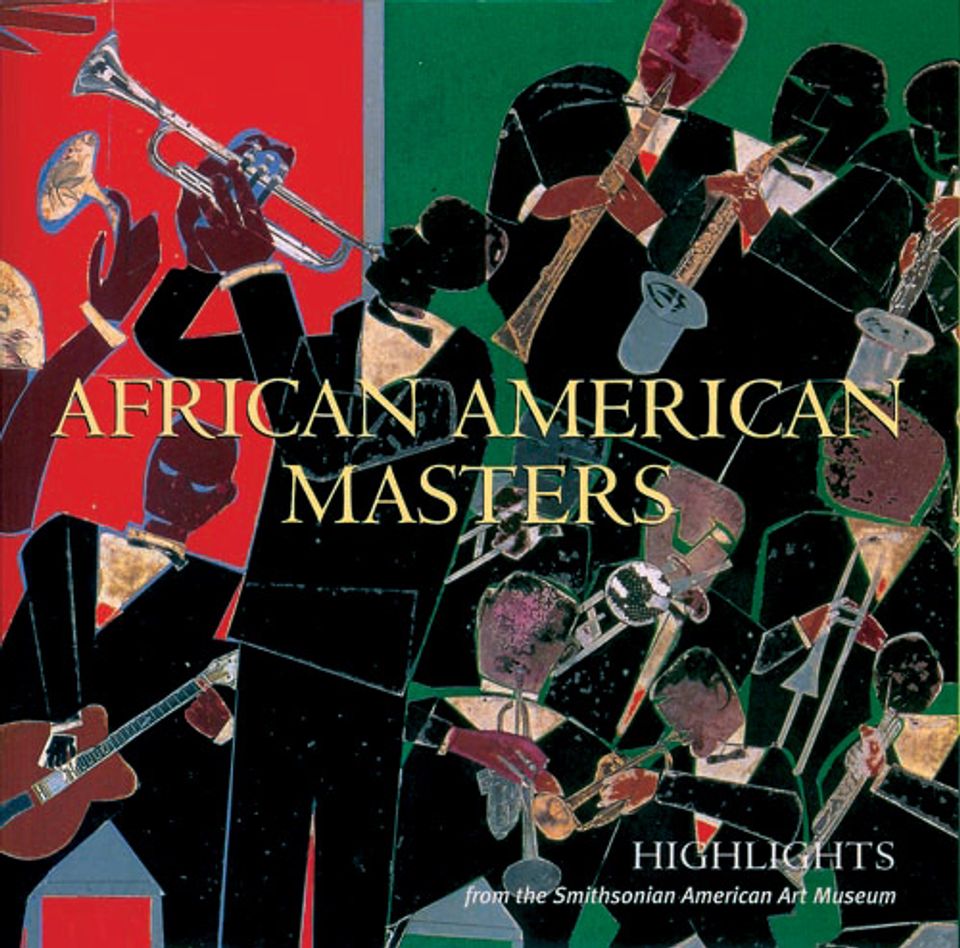James VanDerZee
- Also known as
- James Van Der Zee
- James Van DerZee
- James Augustus VanDerZee
- James Augustus Joseph VanDerZee
- Born
- Lenox, Massachusetts, United States
- Died
- Washington, District of Columbia, United States
- Active in
- New York, New York, United States
- Biography
VanDerZee began photographing as a teenager after having won an eight-dollar camera as a premium for selling pink and yellow silk sachets. Beginning in 1916 he worked out of a commercial Harlem studio he opened on 135th street. During the 1920s and 1930s, he produced hundreds of photographs recording Harlem's growing middle class. Its residents entrusted the visual documentation of their weddings, funerals, celebrities, and social life to his carefully composed images. VanDerZee knew the neighborhood and its inhabitants, and shared their dreams and aspirations for self-determination and racial pride.
Gwen Everett African American Masters: Highlights from the Smithsonian American Art Museum (Washington, D.C. and New York: Smithsonian American Art Museum in association with Harry N. Abrams, Inc., 2003)
- Artist Biography
James VanDerZee is one of the country's most distinctive portrait photographers. From his first experiments with a small box camera around the age of fourteen, his interest continued as he photographed friends and family in Massachusetts, New York, and Virginia for pleasure and occasional commissions. Settling in New York City around 1909, he secured a job as a "darkroom man" for a photographer's small department store concession. In 1916, he chose photography over a less lucrative career as a musician and opened his first studio on West 135th Street.
During the next forty years, VanDerZee chronicled the people and celebrations of Harlem—from schoolchildren, church groups, and wedding couples, to the parades organized by black nationalist Marcus Garvey and the funeral for singer Florence Mills. The exhibition, Harlem on My Mind, at the Metropolitan Museum of Art in 1969, brought his work to the attention of the art world, to which he had paid little notice. Ironically, he had retired that year because of a declining market for his particular form of portraiture and the advent of cheaper, easier-to-use cameras. Three years before his death, however, VanDerZee resumed photography.
Evening Attire [SAAM, 1994.57.3] epitomizes VanDerZee's considered approach to studio portraiture. The young woman is carefully placed between two tables, against a painted background. The details of her dress, the illusionistic backdrop, tiled floor, and patterned tablecloth create an abundance of texture and tone. Her gaze seems dreamy, an effect enhanced by the softly focused edges of the image.
VanDerZee strove to capture the personality, character, and intrinsic beauty of his sitters. His photographs are not simply documents, but celebrations of Harlem lives that included some degree of affluence and an appreciation of small luxuries—a beaded dress, a fur stole, an attentively decorated home. Here was an opportunity for African Americans to see themselves as the center of a universe, as white Americans could in mainstream society. For VanDerZee, this was reflected in the careful framing of a world of elegance, refinement, and a beauty sometimes elusive in the world outside his studio.
Lynda Roscoe Hartigan African-American Art: 19th and 20th-Century Selections (brochure. Washington, D.C.: National Museum of American Art)














